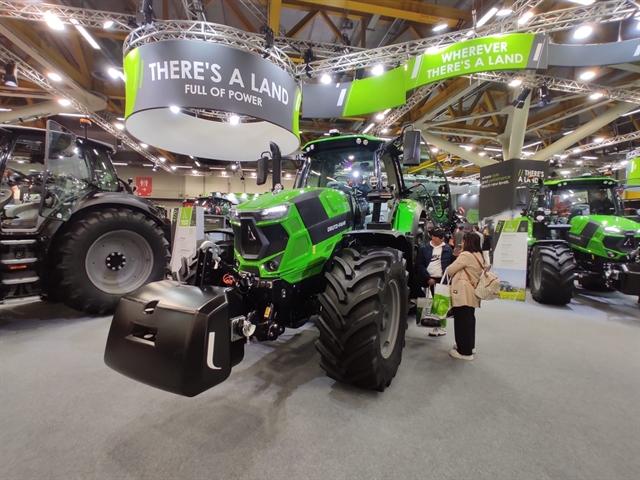 Economy
Economy


|
| A booth at EIMA 2024 runs from November 6-10 in Bologna. The emerging agricultural machinery markets will be countries of Southeast Asia and Africa in the future. —VNS Photo Hoàng Hà |
By Hoàng Hà
BOLOGNA — In the next few years, Southeast Asian and African countries, including Việt Nam, are expected to emerge as potential agricultural machinery markets, according to the Italian Agricultural Machinery Manufacturers Federation (FederUnacoma).
The agricultural machinery sector is forecast to grow significantly in the near future, but the geography of the markets will change.
Major markets in Europe and North America will maintain a high level of investment to ensure high standards.
Emerging markets will be Southeast Asian and African countries. Meanwhile the two Asian giants, India and China, will stabilise their mechanisation rate on the large quantities achieved in recent years.
The demand for agricultural machinery is destined to grow significantly in regions where there is a lot of agricultural development due to population growth - thus, much greater technological equipment is needed than those currently in use, said Mariateresa Maschio, FederUnacoma president.
A key Southeast Asian country is Indonesia, which even today has nearly 300 million inhabitants, making it one of the most populous in the world that is destined to further increase its demographic weight in the coming years.
In Indonesia, imports of agricultural machinery have been growing steadily for the past 15 years, going from a value of 140 million euros in 2009 to almost 700 million euros in 2023 with average growth of 8.6 per cent each year. Experts expect this figure to increase further over the 2024-27 period, with an expected growth rate of around 6.7 per cent each year.
Imports of agricultural machinery are also growing in other populous Southeast Asian countries. Việt Nam (100 million inhabitants) expects imports to increase by 6.2 per cent annually in the 2024-27 period.
Fabio Ricci, deputy director general at FederUnacoma, told Việt Nam News that in 2015, FederUnacoma and the Italian Trade Agency organised a business mission with some Italian companies coming to HCM City and Cần Thơ, Việt Nam.
Italian companies do not really have the right technology for rice production, because Việt Nam has different types of rice fields. So, the most appropriate technology for rice production in Việt Nam comes from Japan and South Korea, according to Ricci.
"The main opportunities for Italian agricultural machinery industry are in Việt Nam's fruit and vegetable production," he said.
"There is strong fruit and vegetable production in Cần Thơ. During the visit, we had some discussions to establish in Cần Thơ a technological centre for agriculture. Unfortunately, the global pandemic hit, so everything was stopped," he said.
"Anyway, our government is pushing us to resume the establishment of this centre after the Minister of Agriculture, Food Sovereignty, and Forests visited Việt Nam last year," the president of FederUnacoma said.
Meanwhile, the Philippines (110 million inhabitants) will likely increase its imports by 7.8 per cent over the next four years.
Thailand (71 million inhabitants) in particular is expected to see an annual increase of 6.8 per cent in the same period, after very slow growth in the last 15 years equal to just a 1 per cent average per year.
Population growth - the source of this growing demand for agricultural technology - will also be decisive in Africa, starting with Nigeria, Ethiopia and the Democratic Republic of Congo, according to FederUnacoma.
Nigeria, which already has 230 million inhabitants, will have over 400 million in 2050, making it the third most populous country in the world, followed by Ethiopia and the Democratic Republic of Congo, both with well over 100 million inhabitants. All three countries are destined to see significant growth in the next twenty years, entering the ranks of the 10 most populous countries on the planet.
In Nigeria, only 46 per cent of cultivable land is currently used, according to experts at the conference. In the Democratic Republic of Congo, a meagre 10 per cent of arable land is currently used for agriculture.
Thus, putting new territories into production is a priority for these and other countries on the African continent, with an increase in demand for technology in the immediate future, but even more so over the next twenty years.
From now until 2027, the import of agricultural machinery will likely grow by 7 per cent each year in Ethiopia and 12 per cent in DRC.
FederUnacoma hoped that EIMA 2024, which runs from November 6 to 10 in Bologna, would bring more chances for enterprises from Southeast Asian and African countries to meet business partners from countries with advanced agricultural machines like Italy. — VNS




